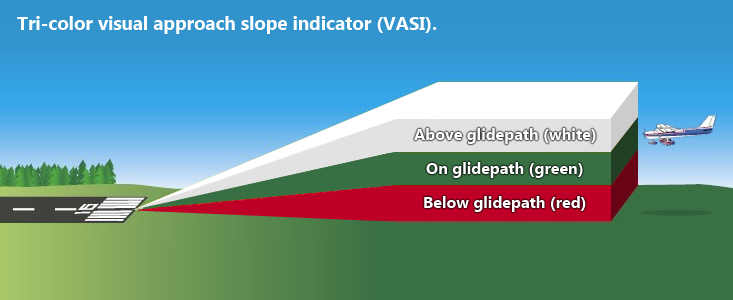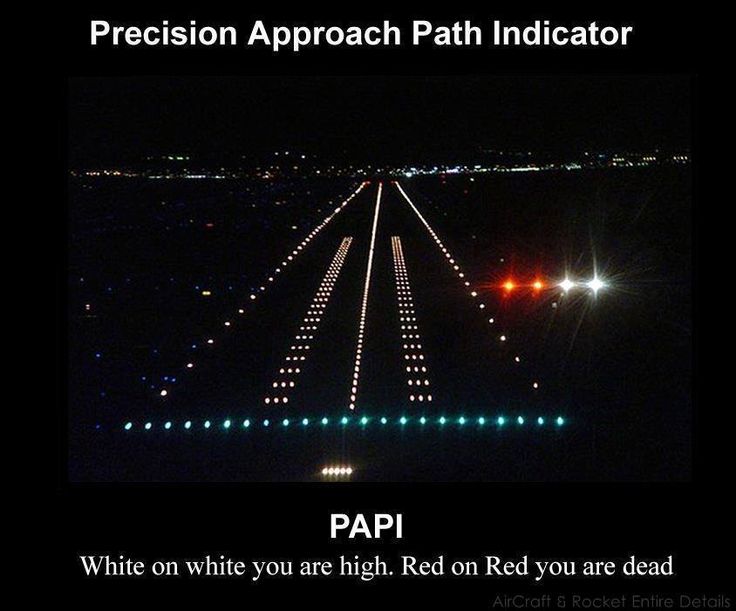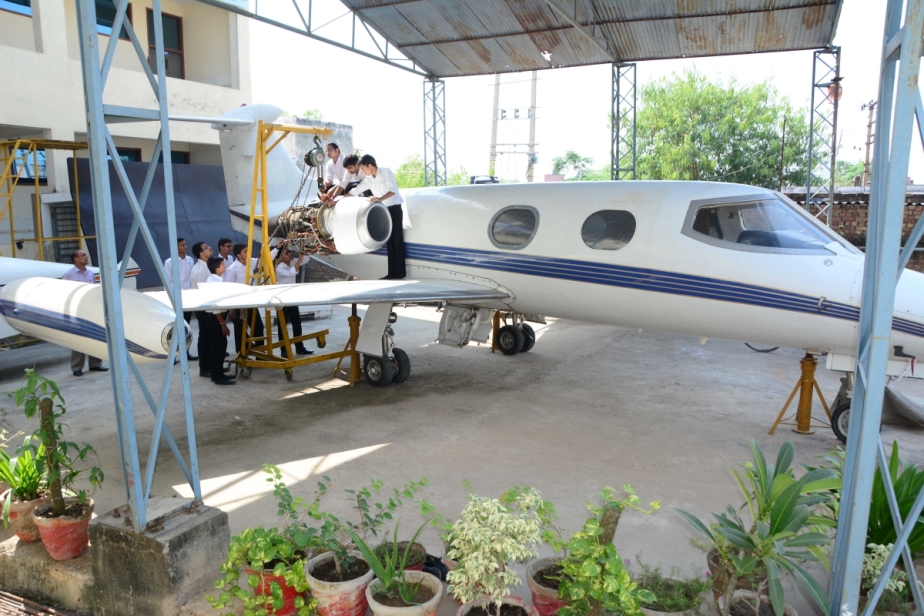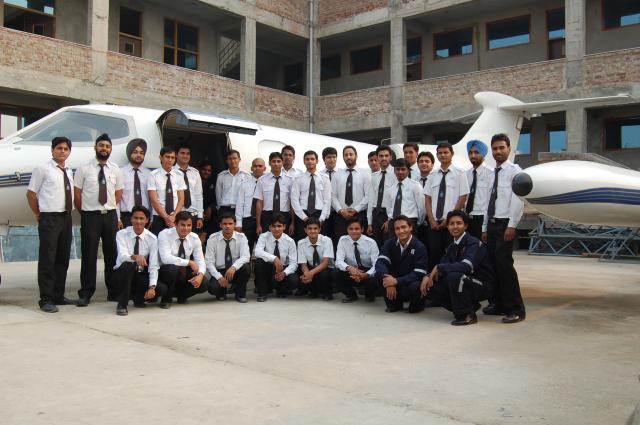Visual Glide Slope Indicator (VGSI) is a ground device that using lights help a pilot in making a safe landing at an airport. During the final approach to a runway, the lights delimit a vertical approach path, helping the pilot ascertain if the plane is too high or too low for a safe landing.
VGSI come in a variety of systems and is taught by the experts in AME Training Institute in India. Let’s discuss them for better understanding:
Visual Approach Slope Indicator or the VASI
A system of lights, VASI is arranged to provide visual descent guidance information during the approach to a runway. Consists of 2,4,6,12 or 16 light units, VASI are arranged in bars with referring terms as near, middle and far bars. These bars are visible to a distance of 3-5 miles during day and extend up to 20 or more miles at night. Landing using the VASI should only be initiated when the airplane is aligned with the runway. VASI stipulate safe obstruction clearance, which is approximately plus or minus 100 of the extended runway centreline and to 4 Nanometre from the starting point. However, in some cases the safe obstruction clearance area can be shortened by reducing the usable distance or by limiting the beam width. VASI works on the principle of colour differentiation between the red and white lamps. These units are arranged so that the pilot using VASI while landing can easily see the combination of lights. Thumb rule for light units:
a)Red over red, you are dead
b)Red over white, you are alright
c)White over white, fly all night

Precision Approach Path Indicator (PAPI)
PAPI is very much similar to VASI, with light units installed in a line of 2 or 4, with best effective range of 5 miles during day and 20 miles at night. Same safe obstruction clearance guidance criteria apply to PAPI, with a difference in the threshold (for VASI it is 4NM and for PAPI it is 3.4 Space-meters).

Stand-Alone Final Approach Runway Occupancy Signal (FAROS)
A fully automated system, stand-alone FAROS on final approach, gives the pilot the runway occupancy status, which indicates whether it may be unsafe for the airplane to land. The system is activated by comprehensive or localized sensors that detects that some other airplane or even the ground vehicles are occupying the specific areas of the runway known as the activation zones. Air Traffic Control (ATC) is responsible for issuing the clearance to land on a runway, however the personnel working at ATC have limited control over the system and it is possible that they might not be able to see the stand-alone FAROS signal.
Pilot Actions
If the pilot observes a PAPI light flashing at 500 feet AGL (above ground level), the pilot must attempt to acquire the runway traffic. At 300 feet above ground level, the pilot must contact ATC for the updated information or whether the FAROS indication is in conflict with the clearance. With PAPI lights flashing continuously, the pilot should drop the idea of landing and must execute an immediate “go around”. However, it is important that the pilot informs about his decision about going around to the ATC, as it is against ATC instructions.
Then there are tri-colour system and pulsating system, which are also visual slope indicators projecting three-colour and two colour visual approach path respectively. For more information on how the VGSI work, get yourself enrolled at AME Training Institute in India

